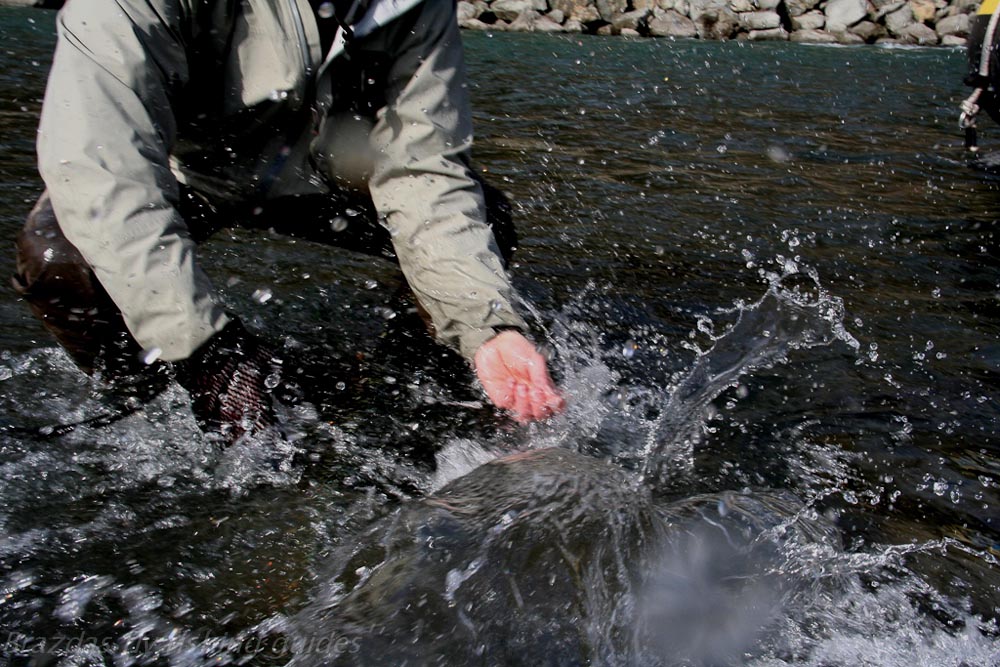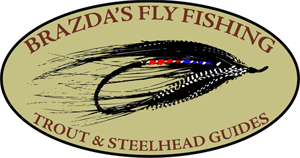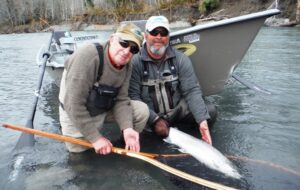
Unlike drinking responsibly angling responsibly is not so easily noticed.
Many fishermen pay guides to take them fishing expecting that they know what the rules are and how to catch the fish they are fishing for. Some anglers hire guides because of the ease of access to the good spots and often are not from the local area. As a fishing guide we are always trying our hardest to get the sports into a good day of fishing and have a good time doing it.
In the Pacific NW we have some of the most complicated regulations in the lower 48 states. The WDFW is constrained by ESA listings upon some fish species or even low run sizes on various others. They do there best to provide angling opportunity around the protection of certain species. Many regulations are formulated from the general public’s opinions; basically they manage the people not so much the fishery.
In 40 years of fishing the NW I have done my share of what I would now consider bad behavior. Back in the day we would follow the TROUT fishing reg’s on many Salmon fisheries, often fishing water totally void of anglers but stuffed to the banks with Salmon or Steelhead. We could easily catch 20-30 fish (King,Coho,Steelhead) in a day under the guise of trout fishing w/o seeing a soul, while just around the bend or over on the other fork guys would be lined up attempting not to kill each other while catching dinner. This is an extreme situation that we would venture into a couple times a season into each of our secret sections. Some of the regulation loop holes were a measly five hundred yard stretch that had been unnoticed by others but easily found by us as YOUNG and tireless addicts of the game…
Long before I become a professional fishing guide I turned to avoiding that situation like the plague, knowing that YES we could go in there and fish the LOOP hole but our angling ethics just wont let us. Many clients would probably jump on the opportunity but we just don’t go there. Angling ethics is not something that comes to everyone or seen the same by everyone. Much of how we fish now today amongst others on the water is from experience, simply many years chasing chrome up and down the west coast. I was much more of a steelhead angler than a trout fisherman when I picked up the sticks to become a fishing guide. The ethics of trout fishermen is much different than those of the hard core steelheaders I ran with.
When I started full time guiding it was for trout on theYakima River, when the steelhead where running I was excited to go fish them with my new friends and guide buddies. I was astonished at how many of them new nothing about the ethics of steelheading. They were fishing guides for Christ sakes and they don’t know this shit?
Some of them are still guides today and much better at it than I. Since then my guide life has come full circle, I am back home guiding theYakimaand the other local rivers for trout and continue to guide steelhead at the best locations statewide through out the year. To my surprise many guides are fishing theLOOPhole and advertising it and most looking don’t even recognize it or don’t care.
Over the past 12 seasons we have had regulation changes based on absurd or oblivious of real issues because of the policy to manage the people NOT the resource.
Washingtonis in need of real GUIDE management. Just this year I seen guides targeting bull trout with streamers under the guise that occasionally a cutthroat might chase it down. This was on rivers that Bull Trout are forbidden from targeting; also the same group was actively angling steelhead under the same loophole regulation. The wdfw has opened those fisheries for trout fishing opportunity TRUSTING that anglers and especially the guides will fish responsibly. The wdfw is bombarded with requests to remove floating devises as tools to angling, this comes from anglers complaints about boat fishermen that do not know how to respectfully fish amongst others. As well, many complaints are unwarranted and applied by special interest groups wanting privatized angling on public water. When other guides show a complete lack of river etiquette it looks bad on every guide and guiding as a way of life. Thankfully the recent response from the guiding community on this possibility has shaken them into reality and are now recognizing there arrogance of way.
As a professional guide we are on the forefront of protecting our business partner, the fish. It all started when we began the lifelong love of fishing, to many of us it was in the form of habitat restoration and volunteering of our time and donations of money to the best organizations that are like minded. I know very few guides that do not donate trips to good causes and organizations, those that don’t they need to wake up and get on it as there irresponsibility will not be rewarded.

As fishing guides it is our responsibility to understand the correct handling of our targeted species and teach that to our guests. As many know a two second snapshot in no way determines the outcome of that captured fish. What determines responsible handling starts with the gear used to capture it and how you land that fish. Many anglers like to light line or under size rods thinking it’s about the longevity of the fight when in reality a short hard fight produces the fastest best fight from that fish and reduces the possible harm to that fish. The use of quality gear like a good catch and release net is critical to landing that fish before it is exhausted to the extent of needing reviving. This one item in itself is the highest form of responsible angling and care to our targeted fish and any guide without one is not caring for there fish completely. A fish exhausted to extent of succumbing to laying sideways in 2 inches of water is over exhausted by my standards. It does provide for a wonderful picture and by all means will survive should the time is lays there be but a few seconds. A fish that is landed before total exhaustion with a good net and totally submerged while unhooking prior to photographing is the responsible way to handle fish it is not the two seconds of photo time that results in poor handling it is what happens in the ten minutes prior that most do not see that determines it successful recovery. Fishing guides often carry the burden of public criticism by those that either do not catch fish and are pointing there finger at those who do, or have witnessed poor etiquette and understand the responsible fishing guide lines.
As much as I do not want government to interfere with my business it may be time to ask them to require outfitter permits to help reduce these rogue irresponsible guides from continuing. A permit would carry a number upon which action could be taken and a permit could be a way to control the growth of new outfitters into areas and weed out the present ones that are no longer reliable to take care of the resource.
Responsible angling also plays a big part in style selection; many of us have formed styles of angling that we adopted over many years of fishing or even through literature. For me I love the swing game and would like to fish only that should it be an option base on aesthetics. I rely on nymphing for those that want to get the most bang for there buck, again the bang is a personal opinion one that we should all be able to provide.
When it comes down to it, the hook is where experience takes us to a level of fish protection that many never realize. Smaller hooks are better on the fish hands down! This may seem like a no brainer but as an avid fly tier I love the look of a sexy bend on a spey style hook, I even adopted it from one I tied over twenty years ago in my business logo, a fly with flowing materials that entice the Steelhead into striking. Unfortunately I can say from experience that this style of fly that rides hook down and is oversized to the tie has tong hooked more steelhead than any other style and we all know what may happen when we tong hook a steelhead. Flies that have a trailing hook would seem like the culprit to this but not by my experience. In part I think it has to do with the fact that the hook on a trailer can be small and the trailer material can flex with the take of the fish and commonly hooks in the corner of the jaw or even outside the mouth which is much more desirable. To many this will be a slap in the face but I have personally seen more tong hooked steelhead on swung flies of the aforementioned style than from ALL the other fly fishing styles. This is not to say that swing fishing is less responsible it says that how you design your fly must be taken into consideration. Like on a tube fly that is designed and tied correctly it will ride in the current wing up and HOOK up as to reduce the tong hook effect, personally I nearly always fish an extended hook of small size or a tube with an up hook point.
Many of the anglers today have realized that steelhead like the round ball, those that knew how to fish a corky 20 years ago knew this well and bait was never used by them and reduced mortality ensured. Many fly fishing guides rely on them exclusively as a source of action for there clients and the steelhead have noticed too as far fewer are being landed on them than when I first brought it out of the closet 12 years ago, then it was simple now not so much. I find myself wondering about the ethics of just hooking a fish for a few minutes to only have it come off and my guest wonder why. Many bead fish fall off, it’s the nature of bead fishing, shit I have seen them roll to the surface spit the hook drift down and eat the next one in line and do it again, they seem to know it’s fake as soon as they feel it but yet can’t resist it again.
One thing we have done for years is to let the assuming anglers think we are fishing one thing when we are fishing another, many assume whenever they see indicator angling that they are fishing the bead, which is far from the truth and we are guilty of allowing the ruse…So much for my fun the cat is crawling from the bag! My new irresponsible side has been spilled. Or have I, you never really know what’s on the end of the line by the rod in hand. Even those strung rods on the truck mounts don’t really show what’s up.
This is just an ongoing observation by myself in an attempt to inform the public angler into what I know and have experienced with the addition of personal direction I hope to see fly fish guiding go. Feel free to comment with your own experiences…
Thank You Jeff Brazda…

